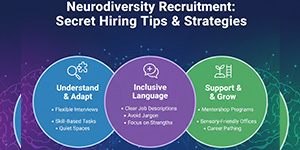What is Background Verification?
In the current job market, hiring skilled and trustworthy people is becoming more and more important to businesses. Background verification are one of the most important parts of the job process.
This process helps companies make smart choices by making sure that the information job candidates give is correct. But what is background verification, and how do they work? The background verification process, why they're important, and how companies do background verification in this article.
 |
What is Background Verification?Background verification make sure that the information a job candidate gives during the hiring process is correct. This includes looking at their educational background, work experience, criminal records, and any other information that is important. |
The employee background verification are meant to make sure that they are who they say they are and that they have the right skills and experience for the job.
The background verifications process are an important part of hiring because they help companies avoid problems like fraud, lying, and possible legal issues. In order to hire people who are both skilled and reliable, companies can check out their backgrounds.
Why is Background Verification Important?
You can't say enough good things about background verification. Companies put money into this process for the following main reasons:
- Ensures Authenticity: Checking a candidate's records makes sure, they have the skills, experience they say they have.
- Lowers Risk: Employers can avoid hiring people who have a past of fraud or criminal behavior.
- Protects Company Reputation: Hiring the wrong person can hurt a business's image, cost it money.
- Compliance with Regulations: To follow the law and regulations, many fields such as healthcare and finance, need to do thorough background checks on new employees.
- Improves Workplace Safety: Companies can make their workplaces safer for their workers by screening job applicants.
What is the Background Verification Process in HR?
The background verification process in HR usually takes more than one step. The exact steps may be different based on the job and the company, but here is how background verification is done:
1. Collection of Information
The first step in the background verifications process is to get the candidate to give relevant information. This could mean:
- Information about yourself (name, date of birth, location)
- Qualifications for education
- A history of jobs
- List of References
- Proof of identity (like a visa or driver's license)
2. Verification of Educational and Professional Credentials
Once all the information is gathered, either the HR team or a third-party verification firm checks the candidate's grades and work history. This means calling schools, universities, and past jobs to make sure the information given is correct.
3. Criminal Background Check
A criminal background check is an important part of the background verifications process. In this step, criminal records are searched to see if the candidate has ever been involved with crime. This could include checks from the neighborhood, national, or international level, depending on the job.
4. Checks of references
Reference checks are done to find out about a candidate's work ethic, skills, and behavior from coworkers or former bosses. This step helps employers figure out if the person applying fits in with the way the company works.
5. Verification of Identity
Identity verification makes sure the applicant is who they say they are. To do this, identification papers may need to be checked against government databases or biometric methods of verification may be used.
6. Check your credit history (if needed)
A credit background check may be done on people who are applying for jobs that involve money. In this step, the candidate's financial stability and sense of duty are tested.
7. Final Report
After all the checks are done, a final report is made. This report is a summary of what was found and helps the company hire the right person.
How Companies Do Background Verification
Companies check employee background verification in a number of different ways. Some companies have HR teams that do the process in-house, while others hire specialized third-party firms to do it. To get a better idea of how companies do background verification here are some examples:
1. Verification at Work
For bigger companies with HR teams, background verification may be done by the company itself. This method gives you more power over the process but it can take a lot of time and resources.
2. Verification Agencies Run by a Third Party
A lot of businesses hire specialized firms to do the background verifications process for them. These agencies can do thorough and quick checks because they have access to a lot of databases and other tools. Outsourcing also makes sure that legal and regulatory rules are followed.
3. Solutions based on technology
As technology gets better, more and more businesses are using automatic tools and software to check background verification. These methods make the process easier, cut down on mistakes made by hand, and get results faster.
Read More: Difference Between People Management and Human Resource Management
What Happens in Background Verification?
Candidates can get ready for what happens in background verification by learning what it involves. To help you understand, here are the steps:
- Permission: The candidate must give permission for the background verifications process. In most cases, this is done with a permission form that has been signed.
- Data Collection: The candidate gives the employer or verification service the information they need.
- Verification: Several checks are done on the collected data, such as criminal records, education records, job records, and references.
- Analysis: The verification organization looks at the results and writes a full report.
Challenges in the Background Verification Process
Even though the background verifications process is necessary it is not always easy. Here are some common problems:
- Incorrect Information: Candidates may give wrong or out-of-date information, which can slow down the checking process.
- Concerns About Privacy: Candidates may not want to give out personal information because they are worried about their privacy.
- Legal Compliance: Employers must make sure about the background verifications process follows all applicable and laws including the General Data Protection Regulation (GDPR,) in the Europe.
- Time-consuming: Doing thorough checks can take a lot of time and especially for applicants from other countries.
Best Practices for Background Verification
Companies should follow these best practices to make sure their background verifications process work well and quickly:
- Obtain Consent: Before starting the verification process you should always get written permission from candidates.
- Use Reliable Sources: For correct information, use reliable sites and sources.
- Maintain Transparency: Tell people about the process and the kinds of checks that are being done.
- Ensure Compliance: Follow the rules and laws to stay out of trouble with the law and avoid claims.
- Partner with Reputable Agencies: When you outsource it's best to work with a verification service that has a good reputation and a history of success.
Conclusion
The background verifications process is an important part of the hiring process. It helps companies make sure that a candidate's qualifications are real, lowers risks, and builds a reliable workforce. For employers to make smart hiring choices and make the workplace safer and more productive they need to know what is background verification and how background verification is done.
The background verification process in HR is very important for making sure the hiring process is fair whether it's done in-house or by a third-party agency. employee background verification will become even more important as businesses continue to put an emphasis on openness and also following the rules.
Following best practices and using technology can help businesses make the background verifications process easier, faster and more accurate. In the end, a thorough and background verifications process is good for both employers and workers because it builds trust and confidence at work.





